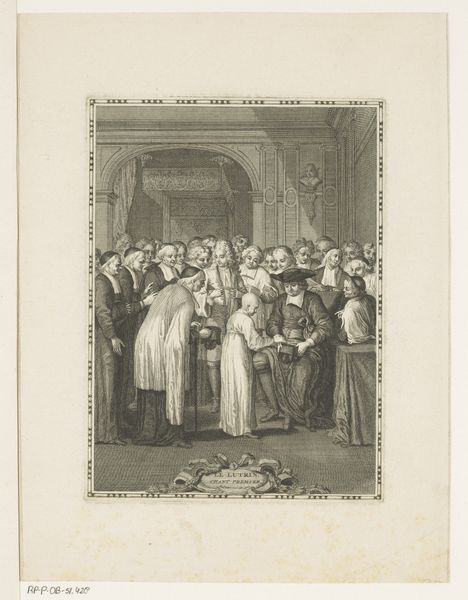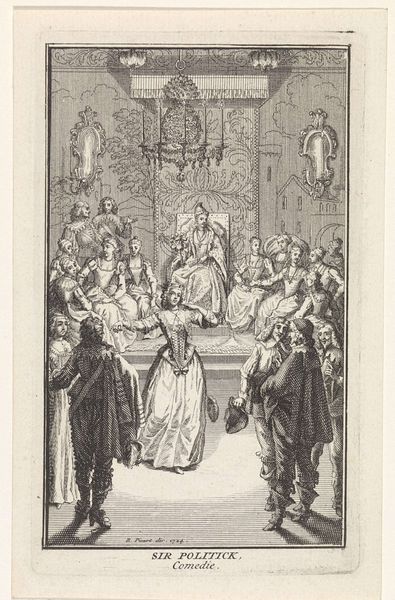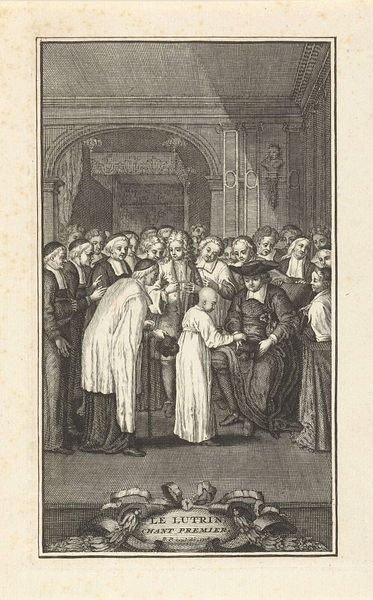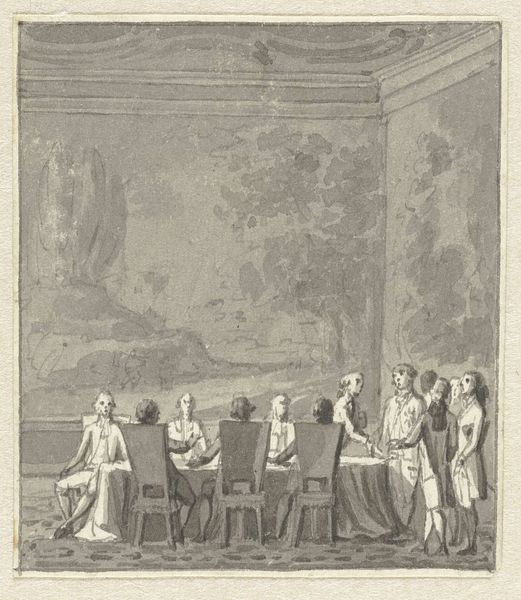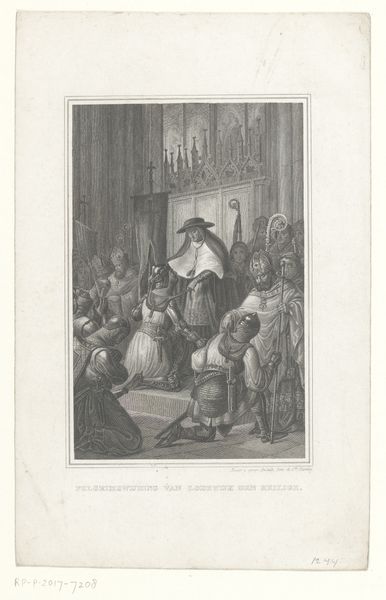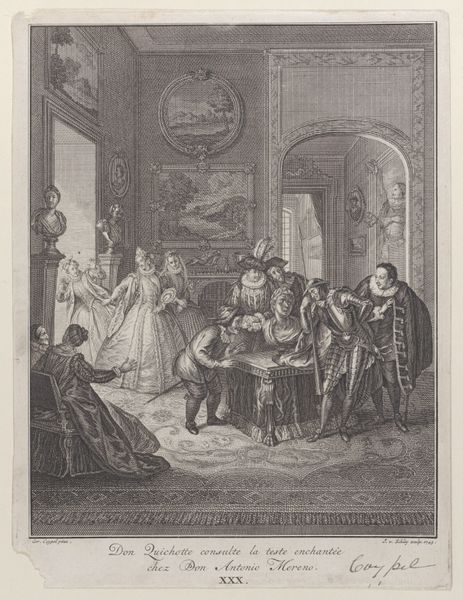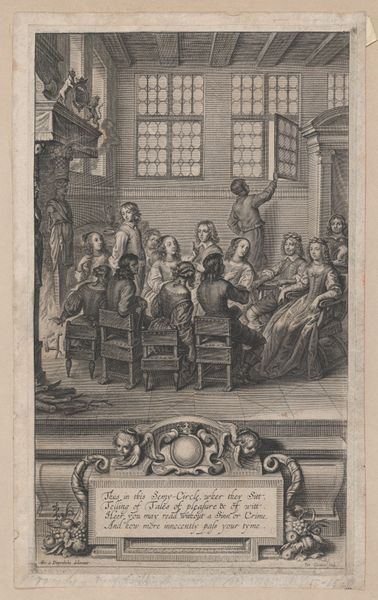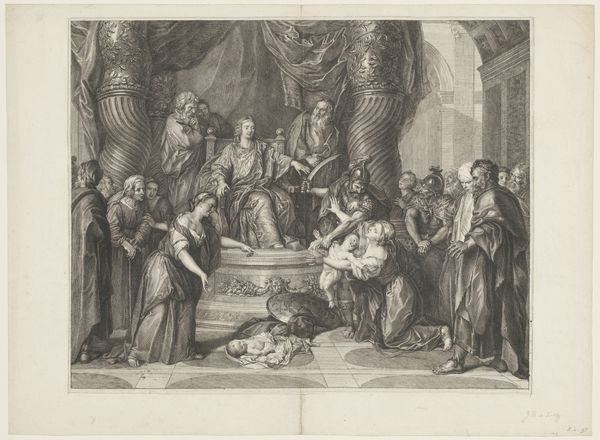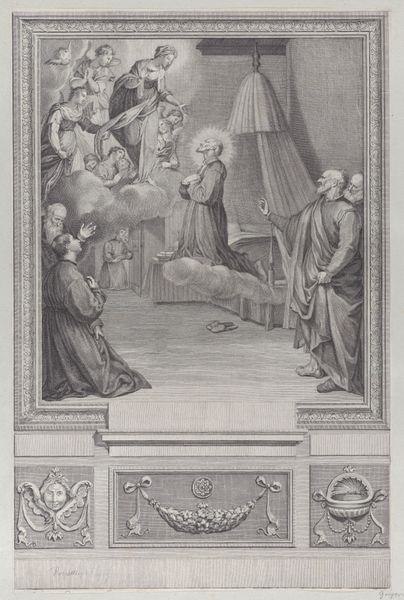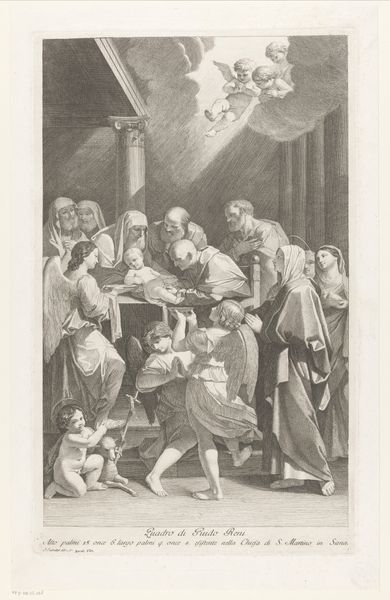
drawing, print, engraving
#
portrait
#
drawing
#
baroque
# print
#
old engraving style
#
old-timey
#
line
#
genre-painting
#
history-painting
#
engraving
Dimensions: height 200 mm, width 146 mm, height 320 mm, width 226 mm
Copyright: Rijks Museum: Open Domain
Curator: The piece before us is titled "Interieur met een groep geestelijken," or "Interior with a Group of Clergymen," created by Bernard Picart between 1717 and 1728. It's an engraving, currently residing in the Rijksmuseum. Editor: The eye is immediately drawn to the complex interplay of light and shadow within the architectural space, carefully structured to define the characters in attendance. It has this dramatic, yet somewhat muted tone typical for baroque artworks. Curator: Absolutely, the artist uses the baroque style as a medium to underscore hierarchies, specifically within the historical context of religious and intellectual power structures of the time. What statements do you think the assembly communicates about privilege and access to knowledge? Editor: Semiotically speaking, the composition emphasizes clarity of form. Note how the engraving creates an incredibly detailed portrayal of textures—the fabrics, the skin, even the way the light bounces. The frame itself creates another level of commentary. It brings the viewer closer, encouraging us to interpret its components with intentionality. Curator: And how fascinating that the margins of the image themselves contain so much detail – books, scrolls, decorative motifs – almost as though the “official” narrative cannot contain the wealth of information present. Consider also the inclusion of children in the lower portion of the frame. This might be a commentary on access to knowledge for different ages, or perhaps their inclusion as witness or participant. Editor: The balance between order and complexity is certainly key here. The artist invites you to decipher each relationship with this formal structure in mind. Curator: What I find particularly potent is how Picart gives us, the viewers, the tools to dismantle the supposed objective realities by laying bare their means of production. We are thus capable of understanding those whose identities have historically been omitted and delegitimized, prompting necessary discussions about identity, gender, and access. Editor: It leaves you considering how the formal elements—light, line, texture—work in tandem to create a visual and intellectual experience. A very rewarding artistic exercise.
Comments
No comments
Be the first to comment and join the conversation on the ultimate creative platform.
